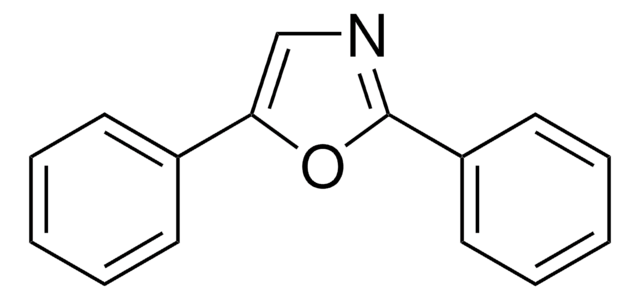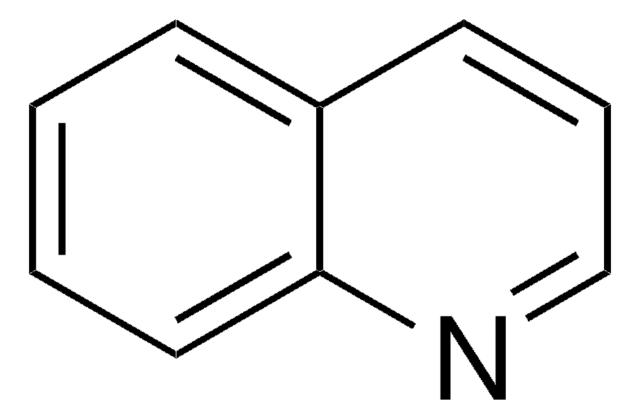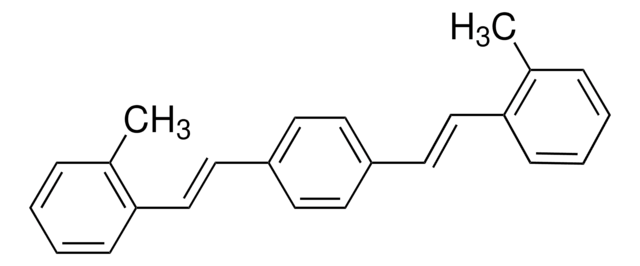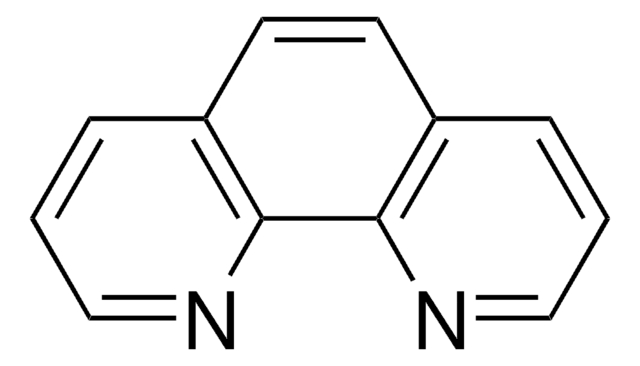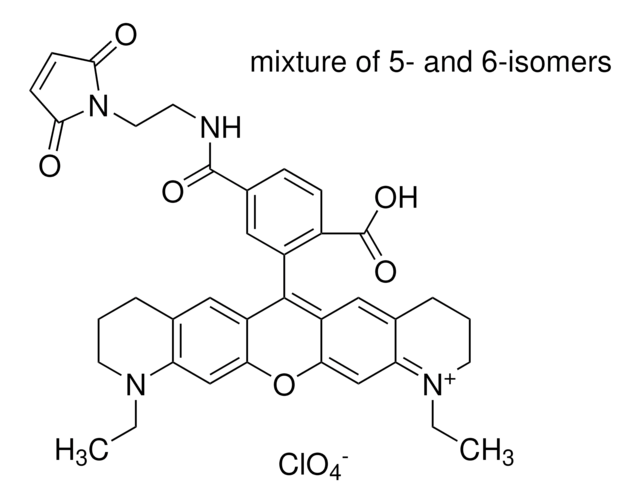推荐产品
方案
98%
mp
242-246 °C (lit.)
适用性
suitable for scintillation
SMILES字符串
c1ccc(cc1)-c2cnc(o2)-c3ccc(cc3)-c4ncc(o4)-c5ccccc5
InChI
1S/C24H16N2O2/c1-3-7-17(8-4-1)21-15-25-23(27-21)19-11-13-20(14-12-19)24-26-16-22(28-24)18-9-5-2-6-10-18/h1-16H
InChI key
MASVCBBIUQRUKL-UHFFFAOYSA-N
正在寻找类似产品? 访问 产品对比指南
一般描述
1,4-Bis(5-phenyl-2-oxazolyl)benzene (POPOP) is a scintillation luminophore. It is commonly used as a secondary wavelength shifter. The photochemical and photophysical studies of POPOP in different solvents have been reported.
相关产品
产品编号
说明
价格
法规信息
新产品
New solution-processable carbazole derivatives as deep blue emitters for organic light-emitting diodes.
Reig M, et al.
Royal Society of Chemistry Advances, 6(11), 9247-9253 (2016)
Investigation of the physical and the optical properties of various base solvents for the liquid scintillator in a neutrino detector.
So SH, et al.
The Journal of the Korean Physical Society, 62(1), 26-33 (2013)
Photophysical Parameters, Excitation Energy Transfer, and Photoreactivity of 1,4-Bis (5-phenyl-2-oxazolyl) benzene (POPOP) Laser Dye.
El-Daly SA, et al.
International Journal of Photoenergy, 2012 (2012)
J Hedstrom et al.
Biochemistry, 27(17), 6203-6208 (1988-08-23)
Measurements of homogeneous and heterogeneous fluorescence intensity decays using a hybrid time-correlated single photon counting/multifrequency phase fluorometer are reported. A trio of fluorophores exhibiting a range of decay profiles was selected. p-Terphenyl, 1,4-bis[2-(4-methyl-5-phenyloxazolyl)]benzene [(Me)2POPOP], and p-bis[2-(5-phenyloxazolyl)]benzene (POPOP), commonly used reference
Kadir Aslan et al.
Analytical chemistry, 80(19), 7304-7312 (2008-09-04)
The use of zinc thin films deposited onto glass supports for surface plasmon coupled fluorescence (SPCF) over a broad 200 nm wavelength range is demonstrated. Fresnel calculations performed in the ultraviolet and visible spectral range are predicted to generate surface
我们的科学家团队拥有各种研究领域经验,包括生命科学、材料科学、化学合成、色谱、分析及许多其他领域.
联系技术服务部门
